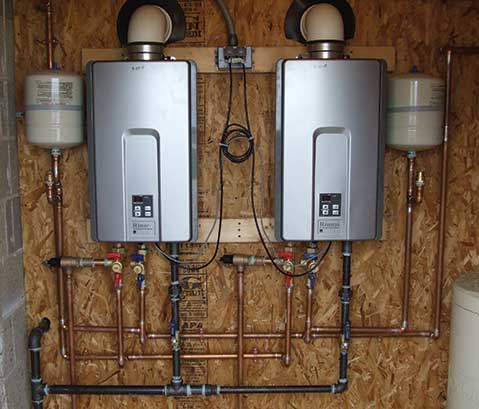Green Your Crib: Instant Hot Water with Less Waste

Hot water is typically the second-largest use of energy in a home (after space heating and cooling). Despite its resource intensity, the hot-water-delivery system is seldom an area of focus when constructing a home. As a result, many homes have systems that take minutes to deliver hot water to the faucet and waste large amounts of energy and water in the process. Approximately 10-15 percent of energy use associated with hot water is wasted in distribution losses.
A brief article appeared in The Santa Barbara Independent a few months back promoting hot-water-recirculating systems as a way to save water. A recirculating system is a hot-water line that loops throughout the house, connecting to all the fixtures that use hot water before returning to the water heater. These systems usually have a timer that runs a pump during fixed periods of peak hot-water usage. By continuously circulating hot water during peak periods, it provides instant hot water and saves water by eliminating the water that typically runs down the drain while waiting for hot water to arrive.
Water is saved using this system but only by using an excessive amount of extra energy. Another drawback: The pipes tend to fail prematurely (usually in five to six years) by corrosion from the continuous flow velocity of the water and from the water chemistry — certainly an issue in Santa Barbara with our hard water.
Another more sustainable option is on-demand hot-water delivery, a system that is compatible with tank or tank-less water heaters and also works with solar hot-water units — the greenest option. At the push of a button, a pump turns on, rapidly pushing the ambient-temperature water out of the hot-water lines and into the cold-water lines en route back to the water heater. This ambient-temperature water, which is normally lost down the drain, is replaced by hot water. When the hot water reaches a distant fixture, a thermal sensor detects the temperature rise and quickly shuts the pump off.
By using the existing cold-water line as the return line, an on-demand delivery system can be easily and cost-effectively retrofitted in existing homes. Because of the thermal sensor, the system will not allow hot water to cross over to the cold-water line, thus ensuring that all cold-water faucets still have cold water.
The benefits are manifold. Energy is conserved: Approximately 30 seconds after pushing the button, hot water arrives at the faucet, and the pump shuts off. Water is conserved: There is no cold water flowing down the drain while waiting for the hot water to arrive. And the users are happy: 30 seconds after pushing the button, they can turn on the faucet and have nearly instantaneous hot water — all while knowing that they are conserving water and energy



